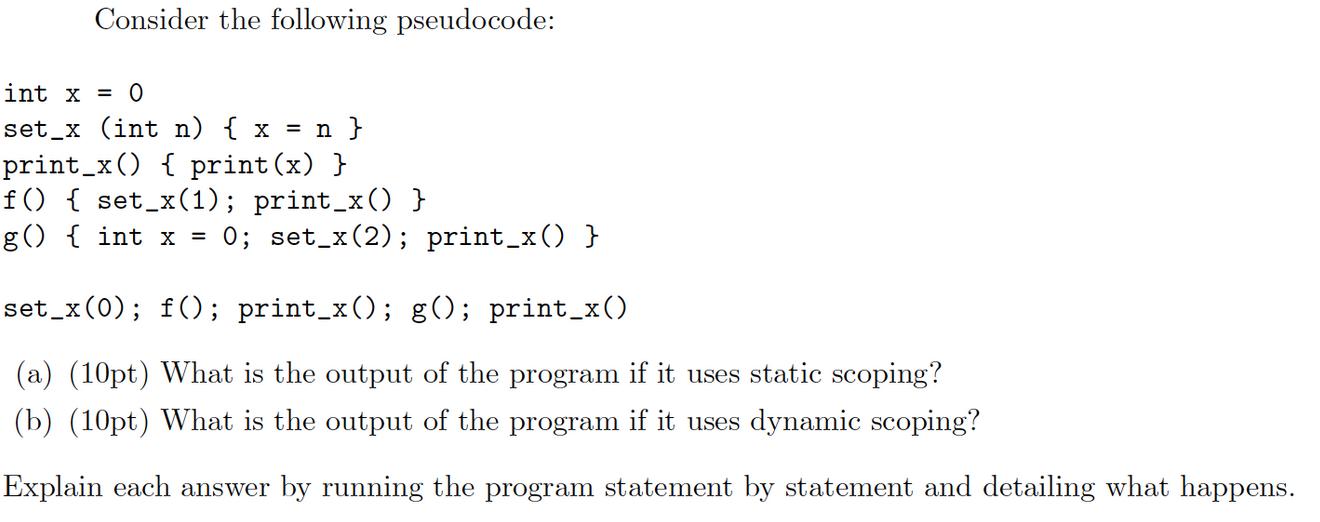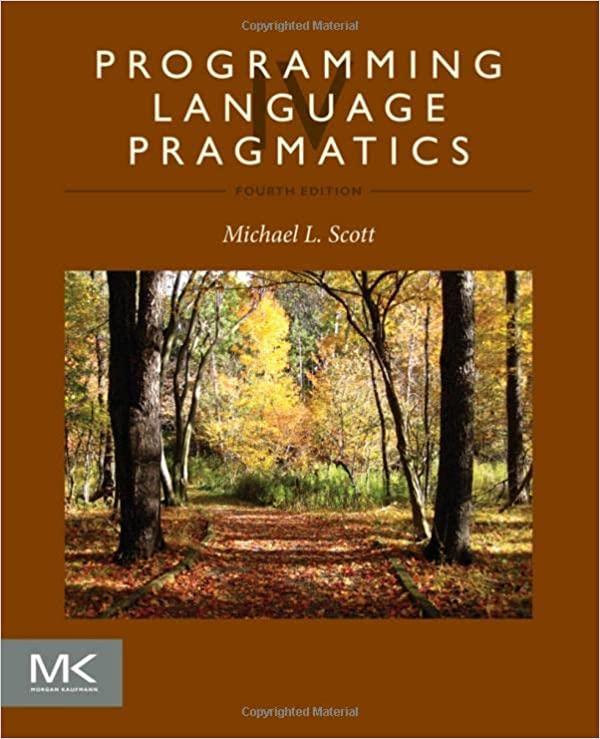Question
Consider the following pseudocode: int x = 0 set_x (int n) { x = n } print_x() { print(x) } f() { set_x(1); print_x()

Consider the following pseudocode: int x = 0 set_x (int n) { x = n } print_x() { print(x) } f() { set_x(1); print_x() } g() { int x = 0; set_x(2); print_x() } set_x(0); f(); print_x()%; g(); print_x() (a) (10pt) What is the output of the program if it uses static scoping? (b) (10pt) What is the output of the program if it uses dynamic scoping? Explain each answer by running the program statement by statement and detailing what happens.
Step by Step Solution
There are 3 Steps involved in it
Step: 1
Lets analyze the given pseudocode and determine the output for both static scoping and dynamic scoping Static Scoping In static scoping also known as lexical scoping the scope of a variable is determi...
Get Instant Access to Expert-Tailored Solutions
See step-by-step solutions with expert insights and AI powered tools for academic success
Step: 2

Step: 3

Ace Your Homework with AI
Get the answers you need in no time with our AI-driven, step-by-step assistance
Get StartedRecommended Textbook for
Programming Language Pragmatics
Authors: Michael L. Scott
4th Edition
0124104096, 978-0124104099
Students also viewed these Programming questions
Question
Answered: 1 week ago
Question
Answered: 1 week ago
Question
Answered: 1 week ago
Question
Answered: 1 week ago
Question
Answered: 1 week ago
Question
Answered: 1 week ago
Question
Answered: 1 week ago
Question
Answered: 1 week ago
Question
Answered: 1 week ago
Question
Answered: 1 week ago
Question
Answered: 1 week ago
Question
Answered: 1 week ago
Question
Answered: 1 week ago
Question
Answered: 1 week ago
Question
Answered: 1 week ago
Question
Answered: 1 week ago
Question
Answered: 1 week ago
Question
Answered: 1 week ago
Question
Answered: 1 week ago
Question
Answered: 1 week ago
Question
Answered: 1 week ago
View Answer in SolutionInn App



